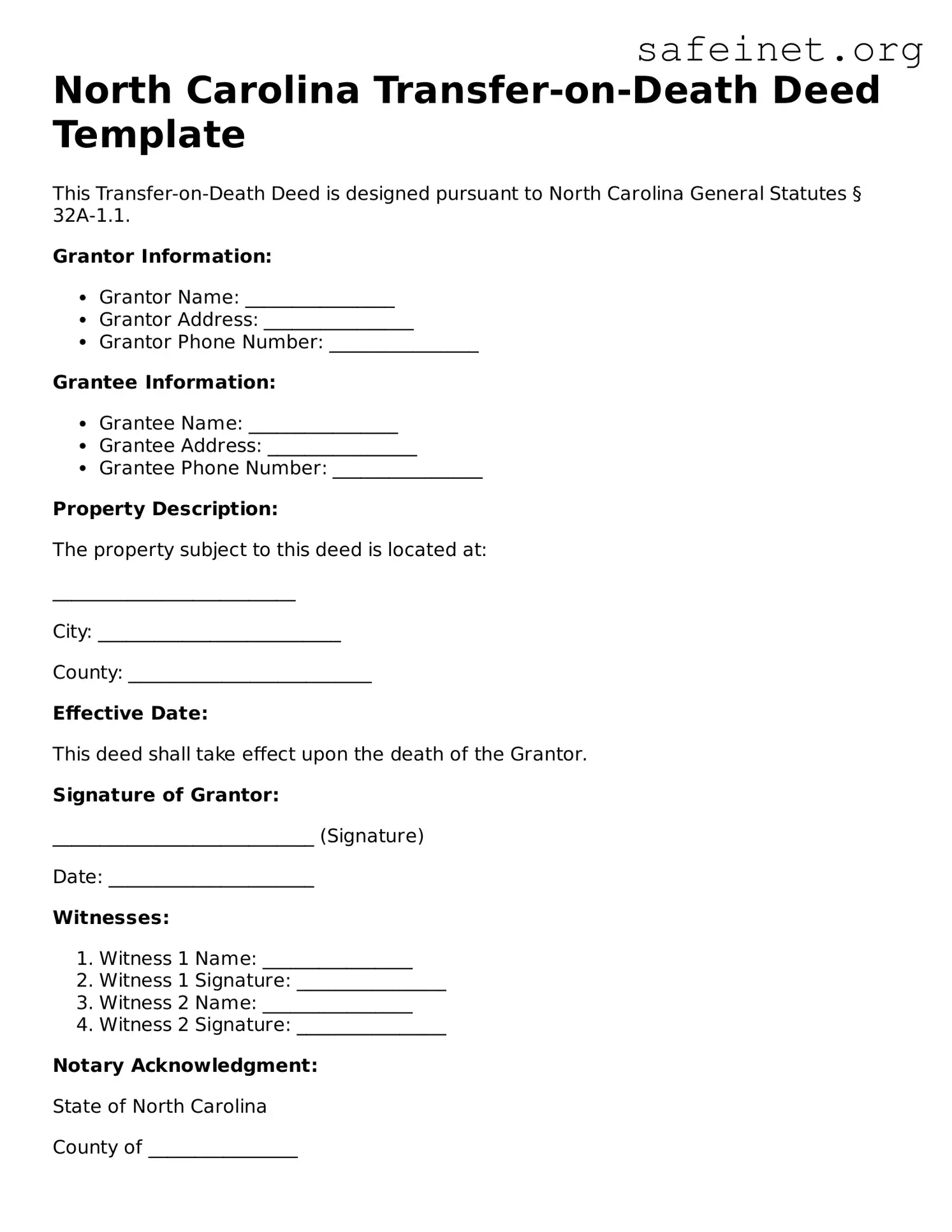North Carolina Transfer-on-Death Deed Template
This Transfer-on-Death Deed is designed pursuant to North Carolina General Statutes § 32A-1.1.
Grantor Information:
- Grantor Name: ________________
- Grantor Address: ________________
- Grantor Phone Number: ________________
Grantee Information:
- Grantee Name: ________________
- Grantee Address: ________________
- Grantee Phone Number: ________________
Property Description:
The property subject to this deed is located at:
__________________________
City: __________________________
County: __________________________
Effective Date:
This deed shall take effect upon the death of the Grantor.
Signature of Grantor:
____________________________ (Signature)
Date: ______________________
Witnesses:
- Witness 1 Name: ________________
- Witness 1 Signature: ________________
- Witness 2 Name: ________________
- Witness 2 Signature: ________________
Notary Acknowledgment:
State of North Carolina
County of ________________
Subscribed, sworn to, and acknowledged before me by ________________ on this _____ day of ________________, 20__.
Notary Public Signature: ________________
My Commission Expires: ________________
